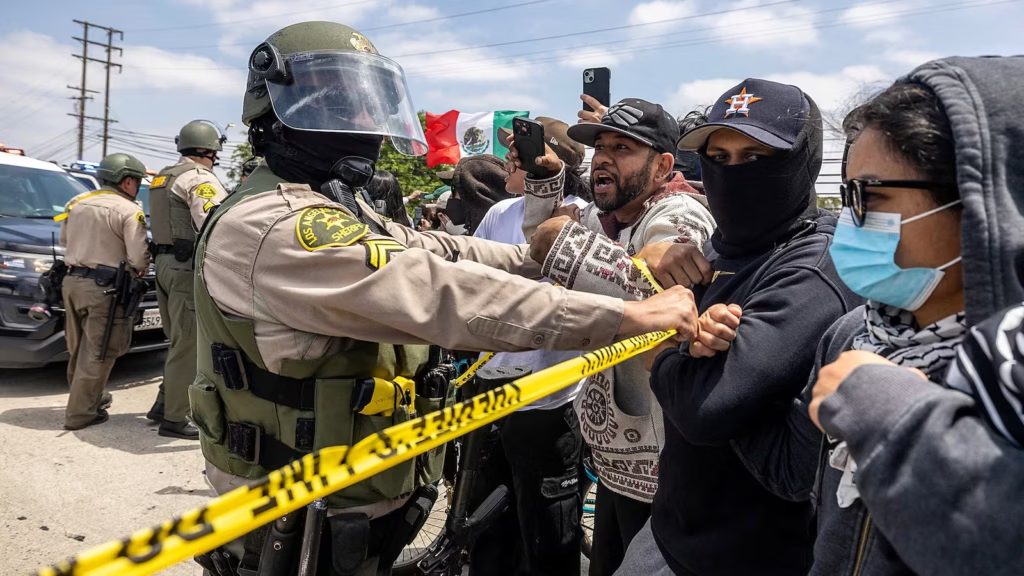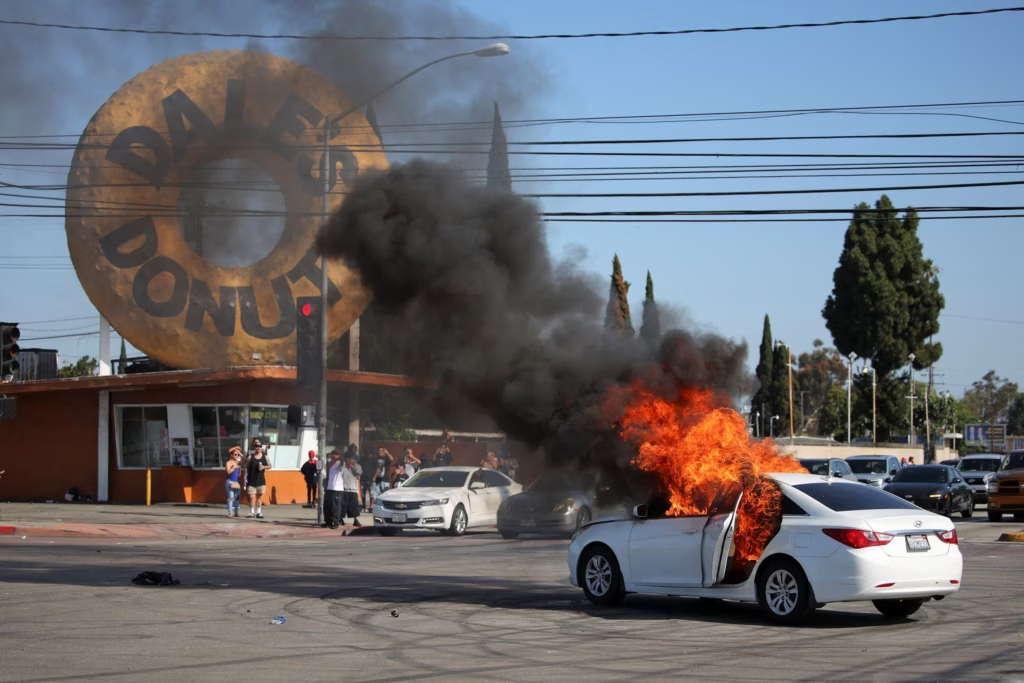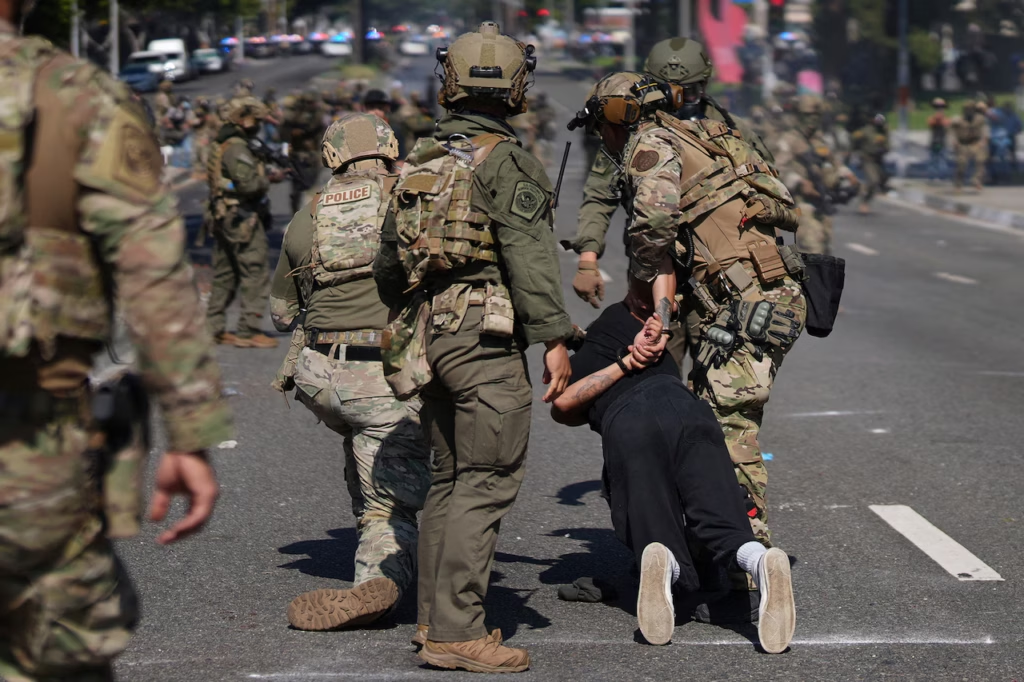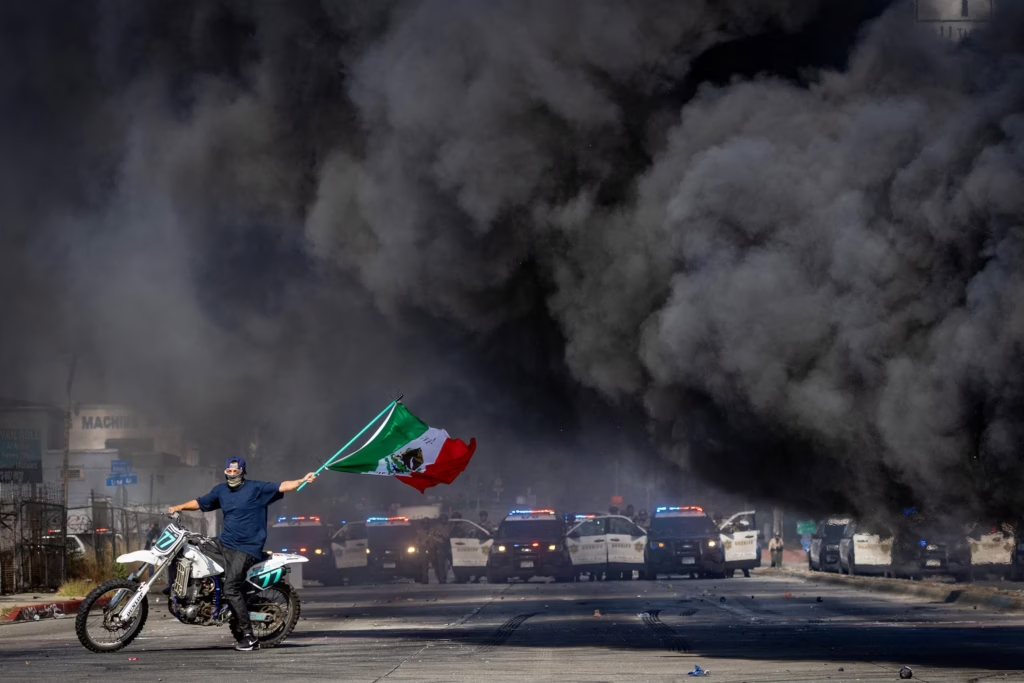The National Guard’s Deployment Amid Anti-ICE Protests: A Closer Look

In a dramatic turn of events reminiscent of the LA riots, Los Angeles has found itself at the center of escalating tensions. Anti-ICE protests erupted, prompting President Trump to deploy the National Guard. This situation has sparked a whirlwind of reactions from officials, protesters, and the public alike. Let’s dive into the chaos. Consider the responses and what it all means for the community.
A Firestorm of Protests

The protests began in Paramount, California, where demonstrators clashed with federal authorities, including Immigration and Customs Enforcement (ICE) officers. Aerial footage captured the intensity of the situation. It showed a car ablaze in the middle of an intersection, painting a dark scene for the LA riots. Protesters circled it on motorbikes, waving flags, and expressing their dissent. It was a scene that could only be described as a mix of a protest. There was a chaotic street festival—minus the fun.
The Spark That Ignited the Flames

Daniel Cole/Reuters
The unrest was reportedly triggered by ICE attempting to conduct a raid at a local business. As tensions flared, protesters took to the streets, leading to confrontations with law enforcement. In New York City, similar scenes unfolded. Over 20 anti-ICE rioters were arrested during a standoff with authorities, echoing the dramatic moments of the LA riots.
The National Guard Steps In

In response to the escalating violence, President Trump authorized the deployment of the National Guard to Los Angeles County. This action evoked steep emotions at the LA riots. The decision was met with mixed reactions. While some praised the move as necessary for maintaining order, others criticized it as an unnecessary escalation. California Governor Gavin Newsom described the deployment as a “spectacle” and argued that local authorities were capable of managing the situation without federal intervention.
A Show of Force or a Misguided Mission?

The deployment of the National Guard has raised questions about the appropriateness of using military forces in domestic protests. Critics argue that this approach could further inflame tensions rather than quell them. Meanwhile, supporters of the deployment assert that it is a necessary measure to protect federal agents and maintain public safety. They reference the historical impact previous LA riots.
Voices from the Frontlines

As the situation unfolded, various officials weighed in. Defense Secretary Pete Hegseth warned that active-duty Marines could also be deployed if violence continued. He emphasized that the Trump administration would not tolerate violence against federal agents. Meanwhile, FBI Director Kash Patel made it clear that anyone assaulting law enforcement would face serious consequences. It’s clear that the stakes have never been higher during the LA riots.
Local Leaders Speak Out

Los Angeles Mayor Karen Bass condemned the violence, stating that it was “unacceptable” and that those responsible would be held accountable. She emphasized the importance of peaceful protest. At the same time, she acknowledged the fear many in the community felt due to recent federal immigration enforcement actions. It’s a delicate balance—advocating for rights while ensuring public safety. Reflecting on the LA riots can help guide these necessary conversations.
The Bigger Picture

Barbara Davidson/Reuters
This situation is not just about protests; it’s a reflection of the broader national conversation surrounding immigration, law enforcement, and civil rights. As communities grapple with these issues, the deployment of the National Guard serves as a stark reminder of the tensions in our society. These tensions have been elevated during the LA riots.
What’s Next?

As the dust settles, it remains to be seen how this situation will evolve. Will the National Guard’s presence help restore order, or will it further escalate tensions? One thing is for sure: the eyes of the nation are watching. The outcomes of these protests could have lasting implications for immigration policy and community relations.
In the end, whether you’re on the frontlines of the protests or watching from the sidelines, it’s clear that this is a pivotal moment in American history. The LA riots are a significant moment in this time in regards to immigration law. As we navigate these turbulent waters, let’s remember to keep the conversation going. This is important because, in the end, understanding is the first step toward resolution.
So, what do you think? Is the National Guard’s deployment a necessary measure, or is it an overreach? Let us know your thoughts in the comments below!
